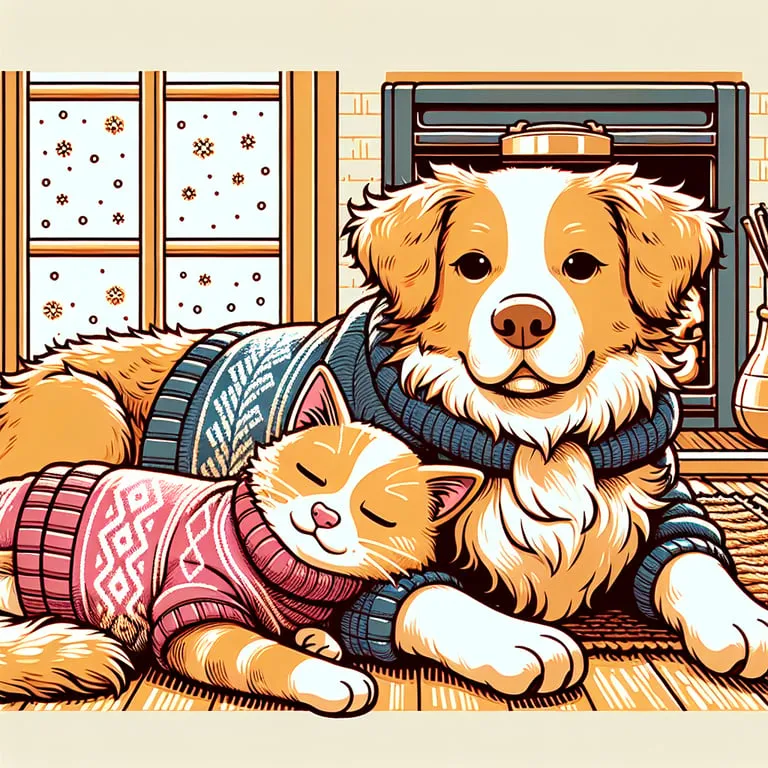As the harsh winter grips the landscape, pet owners must take crucial steps to ensure their furry friends are protected from the threat of frostbite. This serious condition can lead to irreversible damage to pets’ extremities such as ears, tails, and paws, especially in smaller animals. Following expert guidance from the Ontario Society for the Prevention of Cruelty to Animals (SPCA) can make a significant difference in safeguarding pets during the cold months.
 Understanding Frostbite Risks
Understanding Frostbite Risks
Frostbite poses a significant threat when temperatures plummet, affecting the outer tissues due to reduced blood flow meant to preserve vital organs. The ears, tails, and paws are particularly susceptible as they are less insulated by fur. In critical cold conditions, frostbite can be a life-threatening issue for pets, requiring immediate medical intervention if skin turns gray or black.
Signs of Frostbite
Indicators include pale or gray skin, shivering, swelling, and discomfort. If untreated, the skin may develop blisters or become critically damaged. Smaller animals, like certain dog breeds and cats, face amplified risks due to their smaller size and lesser fat reserves.
Comprehensive Winter Care Tips
The SPCA provides essential advice to prevent frostbite and other winter-related challenges:
1. Limit Outdoor Exposure
During extreme cold, reduce your pet’s time outdoors. Allow only short trips for essential bathroom breaks and replace long walks with indoor play sessions to keep them active and stimulated in a warm environment.
2. Invest in Pet Winter Gear
Equip pets with suitable clothing such as coats or sweaters, especially short-haired breeds, to provide extra warmth. Paw protectors or booties are advisable to shield their feet from ice, salt, and cold surfaces that can cause irritation or chemical burns.
3. Monitor for Signs of Discomfort
Vigilance is key—observe your pet for signs of distress. Immediately bring pets indoors if they start shivering or seeking warmth.
4. Create Cozy Indoor Spaces
Ensure your home has warm, draft-free areas where pets can rest. Supplement their space with blankets or heated beds and avoid cold surfaces like tiles to maintain comfort.
5. Proper Hydration and Nutrition
Fresh, unfrozen water is essential, along with a nutrient-rich diet. Optimal hydration and nutrition are vital for your pet’s energy and immune system during the colder months.
6. Beware of Hibernation Hazards
Some pets may seek refuge in enclosed spaces during the cold. Always check your car’s engine area for hidden animals before starting the vehicle to prevent accidents.
7. Avoid Overexposure to Salt and Chemicals
De-icing salts and chemicals are harmful to pets. After outdoor activity, thoroughly clean paws to remove residues that may cause irritation or upset stomachs if ingested.
Addressing the Issue of Stray Pets
The SPCA notes an increase in abandoned pets near shelters, especially during colder months. This reflects a societal challenge, emphasizing the need for public awareness and support for animal shelters. Encourage community participation in initiatives providing protection and care for homeless animals.
Preparedness is Paramount
Protecting pets from the harsh realities of winter involves proactive measures. By adhering to these SPCA recommendations, pet owners can greatly reduce frostbite risks and ensure their animal companions remain safe and healthy. Immediate veterinary assistance is crucial at the first signs of frostbite. Prioritizing pet safety allows for an enjoyable winter without worry.
https://www.petmediapress.com/